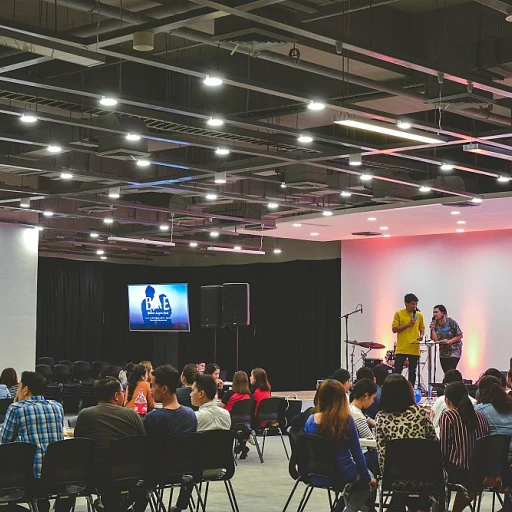
Understanding Contract-to-Hire Arrangements
Defining Contract-to-Hire Arrangements
Contract-to-hire arrangements can be a powerful strategy in the staffing industry, offering unique benefits to both companies and candidates. They essentially involve hiring a candidate on a short-term project or a contract basis with the possibility of converting them to a full-time employee after evaluating their fit within the company culture and the role’s requirements. This model allows businesses to assess a candidate's capabilities and cultural fit over a predetermined contract period before making a long-term commitment. In contrast to traditional hiring practices, contract-to-hire enables employers to address immediate staffing needs without jumping into long-term employment commitments. This approach can be particularly beneficial in tech hiring or roles that require specific project-based skills. It's a strategic decision for employers who want the flexibility to adapt their workforce to changing business needs. The contract-to-hire model isn’t just favorable for employers, though. Candidates equally benefit by gaining the chance to prove their skills in a real work environment. It also gives them a better understanding of the company’s culture and operations, ensuring that when they do transition to a full-time position, they do so with clear expectations and confidence. Moreover, engaging in contract hire arrangements often involves working closely with staffing agencies that provide staffing services. These agencies play a crucial role in facilitating the contract-to-hire process, ensuring both employers and candidates have a smooth experience. The relationship between staffing agencies and companies is a critical aspect that influences the hiring dynamics, especially when regular feedback during the contract period helps in refining the process. For those looking to enhance their recruitment skills and understand more about staffing, exploring effective staffing training can be a valuable step. This resource can provide insights on maximizing the benefits of contract-to-hire arrangements and establishing successful recruitment strategies. While there are numerous benefits to this model, it's essential to be mindful of certain challenges and consider best practices to ensure successful implementation, as we'll explore further in subsequent sections.Advantages for Employers
Why Employers Opt for Flexibility
Contract-to-hire arrangements offer significant advantages for employers, one of the most compelling being the flexibility they provide. By bringing someone on under a contract basis initially, companies can evaluate a candidate’s fit within their organization without committing to a full-time hire immediately. This model allows organizations to assess the candidate's skills and adaptability to the company culture over an extended period. Employers often view the contract period as a probationary phase. This time allows them to gauge a candidate’s performance on specific projects or tasks. It’s a strategic way to mitigate the long-term risks associated with traditional hiring methods. Instead of relying purely on interviews and resumes, which can sometimes fail to predict a candidate’s on-the-job performance, companies get a firsthand look at the talent in action.Cost-Effective Staffing Solutions
Utilizing a contract-to-hire model can also be a cost-saving measure. By using staffing services to onboard candidates on a contractual basis, employers can sometimes reduce the immediate overhead costs associated with hiring full-time employees. Positions that may not require a long-term commitment can especially benefit from this arrangement. Moreover, the hiring strategy often involves staffing agencies that handle the initial stages of tech hiring. These agencies provide employers with access to a pool of qualified candidates, streamlining the hiring process. For roles that require a high degree of specialization or those that carry heightened cultural fit demands, this approach becomes particularly advantageous.Enhancing Talent Retention and Fit
Another benefit for employers is the opportunity to ensure a better cultural fit. By observing how a candidate interacts with the existing team and aligning with company values, employers can make more informed decisions when transitioning from contracted employment to full-time roles. This leads to higher employee satisfaction and, consequently, greater retention rates. Additionally, contract-to-hire arrangements offer clear expectations. Both parties understand the timeline and the performance goals expected during the contract period. Regular feedback during this time can set the stage for a smoother transition to full time employment, should the candidate meet the expectations laid out. In conclusion, the flexibility, cost-effectiveness, and improved fit offered by contract-to-hire models make it a viable path for many employers seeking to expand their teams. To learn how to fine-tune your candidate sourcing strategy to maximize these benefits, check out mastering the art of effective candidate sourcing.Advantages for Candidates
Fostering Personal and Professional Growth
Embarking on a contract-to-hire journey opens the door for candidates to experience personal and professional growth. This staffing model allows candidates to showcase their skills and abilities in a real-world setting, providing a unique opportunity to demonstrate their worth to potential employers. Unlike traditional hiring, where candidates are judged based on interviews and resumes, a contract period gives them the chance to prove themselves through hands-on projects, helping them stand out in the increasingly competitive job market.Testing the Waters for a Perfect Fit
A significant advantage for candidates in contract-to-hire arrangements is the ability to assess the cultural fit and alignment with the company before committing to a long-term or full-time employment. Candidates can explore the company culture, understand team dynamics, and engage with colleagues, ensuring that they feel comfortable in the workplace. This period is essential in making long-term personal career decisions, as it offers a chance to work, adapt, and determine whether the company aligns with their career goals and personal values.Flexibility and Diverse Opportunities
Contract-to-hire roles provide candidates with a broad spectrum of opportunities to explore different sectors and roles. This flexibility can be particularly beneficial for those looking to shift to a new industry or role. Working on various projects within the contract period equips candidates with diverse experiences and skills that enhance their adaptability and appeal to future employers. Furthermore, staffing services often provide diverse opportunities, helping candidates find the right fit through their extensive network of companies.Building Relationships and Professional Networks
During the contract phase, candidates can build meaningful relationships within the company and beyond. Engaging with project teams, managers, and cross-functional departments not only aids in the integration into the company culture but also expands their professional network — an invaluable asset in today's job market.Feedback and Growth Opportunities
The contract-to-hire model often involves regular feedback, allowing candidates to understand their strengths and areas for improvement. This feedback is crucial for personal development and often comes with ongoing support from both the company and staffing agency. By addressing areas of growth proactively, candidates can enhance their performance, increasing their chances of being offered a hire position. For those interested in navigating the intricacies of candidate sourcing through innovative tools and HR strategies, exploring more about the role of an HRIS manager in candidate sourcing can be immensely beneficial.Challenges and Considerations
Addressing Potential Challenges in Contract-to-Hire Models
While contract-to-hire arrangements offer numerous benefits for both employers and candidates, they are not without their challenges. Understanding these potential pitfalls can help companies and candidates navigate the contract period more effectively, ensuring a smoother transition to full-time employment.
Managing Expectations and Communication
One of the primary challenges in a contract-to-hire model is setting clear expectations. Employers and candidates must communicate openly about the role's requirements, the company culture, and the long-term potential of the position. Without regular feedback and open dialogue, misunderstandings can arise, potentially leading to dissatisfaction on both sides.
Evaluating Cultural Fit
Determining whether a candidate is a good cultural fit for the company can be difficult during a short-term contract period. Employers should use this time to assess how well the candidate integrates with the team and aligns with the company's values. Similarly, candidates should evaluate whether the company's culture and work environment meet their expectations.
Balancing Short-Term and Long-Term Needs
Employers must balance their immediate staffing needs with their long-term hiring goals. While a contract-to-hire arrangement allows for flexibility, it can also create uncertainty for candidates who may be seeking more stable, long-term employment. Companies should strive to provide clear timelines and criteria for transitioning to a full-time hire position.
Legal and Financial Considerations
There are also legal and financial considerations to keep in mind. Companies need to ensure compliance with labor laws and regulations when hiring on a contract basis. Additionally, the financial implications of transitioning a candidate from a contract hire to a full-time employee should be carefully evaluated to avoid unexpected costs.
By addressing these challenges proactively, companies and candidates can maximize the benefits of contract-to-hire arrangements, making long-term employment a more viable and rewarding outcome for both parties.
Best Practices for Successful C2H Implementation
Implementing a Successful Contract-to-Hire Model
Navigating the process of contract-to-hire requires a strategic approach. Employers and staffing agencies must prioritize clear expectations to avoid misunderstandings, ensuring both parties regard this as a beneficial journey. Below are essential practices for executing a successful contract-to-hire arrangement.
- Define Contract Terms Clearly: Establish the duration of the contract period and outline the specific roles require. This helps the candidate and the company align on expectations, reducing potential discrepancies in the future.
- Assess Cultural Fit: Prioritize understanding the company culture and communicating it effectively to candidates. It’s vital for the staffing services to vet candidates not just on skill but also on how well they would adapt and thrive within the company’s environment.
- Regular Feedback and Communication: Employers should provide candidates with consistent and constructive feedback throughout the contract hire period. This not only aids in professional growth but also helps in evaluating the candidate's fit for a full-time hire position.
- Flexibility and Evaluation: Remain open to adjusting contract terms based on evaluation periods. If the candidate shows promise or if project requirements shift, adjustments in contract terms can lead to long-term benefits for both parties.
- Collaborate with Staffing Agencies: Leverage the expertise of staffing agencies, utilizing their network and experience to ensure that the talent sourced aligns with the company’s requirements and long-term goals.
By employing these best practices, companies can maximize the benefits of contract-to-hire arrangements. They can create a pathway to secure top talent while maintaining agility in staffing strategies, ultimately making their hiring processes more efficient and effective.












